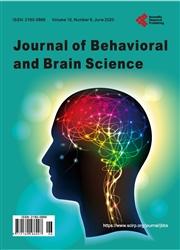The Influence of Remote Ischemic Conditioning on Focal Brain Ischemia in Rats
引用次数: 1
Abstract
Despite obvious progress in the treatment of acute forms of ischemic stroke, the risk of this condition remains unacceptably high. Brain infarction in the middle cerebral artery basin occurs in patients with atherosclerosis. The onset of the brain infarction is facilitated by the cessation of circulation (embolism) in conditions of insufficient collateral circulation. The extent of the infarct zone is determined by neuronal death and impaired microcirculation. The development of new methods for effective targeted restorative stroke therapy is crucial for restorative treatment and reducing the risk of mortality after stroke. Remote ischemic conditioning (RIC) is an approach to limiting reperfusion injury in the ischemic region of the brain after focal ischemia. One of the most commonly used in vivo models in stroke studies is the filament model of Middle Cerebral Artery Occlusion (MCAO) in rats. In our experiment, it was performed for 30 min (J. Koizumi) with subsequent 48-hour reperfusion. Within the first 24 hours after the start of reperfusion several short episodes of ischemia in low limbs were induced. After 48 hours of reperfusion the brains were harvested and stained with TTC. Then we evaluated the effect of RIC within 24 hours ex vivo in rats’ brains, as well as syndecan-1 plasma concentration. Infarct area was assessed by means of Image-Pro program with statistical analysis. Infarct volumes in the model group (31.97% ± 2.5%) were significantly higher compared to the values in the RIC group 48 hours after ischemia-reperfusion (13.6% ± 1.3%) (*P < 0.05). A significant reduction in the area of infarction after RIC is likely due to the effect on the regulation of collateral blood flow in the ischemia area. On the second day after ischemia-reperfusion, tissue swelling was reduced in the RIC group compared to the model group. Analysis of the average concentration of Syndecan-1 revealed the difference between model and RIC groups. Syndecan-1, endothelial glycocalyx protein, might be the regulator which performs vascular control of the interaction with inflammatory cell and is responsible for mediate effect of remote ischemic conditioning on the restriction of ischemic-reperfusion injury.远端缺血调节对大鼠局灶性脑缺血的影响
尽管在急性缺血性中风的治疗方面取得了明显的进展,但这种情况的风险仍然高得令人无法接受。脑梗死发生在动脉粥样硬化患者的大脑中动脉盆地。在侧支循环不足的情况下,循环停止(栓塞)促进了脑梗死的发生。梗死区的范围由神经元死亡和微循环受损决定。开发有效的靶向恢复性脑卒中治疗新方法对于恢复性治疗和降低脑卒中后死亡风险至关重要。远端缺血调节(RIC)是一种限制局灶性缺血后脑缺血区域再灌注损伤的方法。脑卒中研究中最常用的活体模型之一是大鼠大脑中动脉闭塞(MCAO)细丝模型。在我们的实验中,进行30分钟(J. Koizumi),随后48小时再灌注。在再灌注开始后的前24小时内,下肢出现了几次短暂的缺血发作。再灌注48小时后,取脑组织,用TTC染色。然后,我们评估了体外24小时内RIC对大鼠大脑的影响,以及syndecan-1的血浆浓度。采用Image-Pro软件评估梗死面积,并进行统计学分析。缺血再灌注48 h后,模型组梗死面积(31.97%±2.5%)明显高于RIC组(13.6%±1.3%)(*P < 0.05)。RIC后梗死面积的显著减少可能是由于对缺血区域侧支血流的调节作用。缺血再灌注后第2天,RIC组与模型组比较,组织肿胀减轻。Syndecan-1的平均浓度分析显示模型组与RIC组之间存在差异。内皮糖萼蛋白Syndecan-1可能是调控血管与炎症细胞相互作用的调节因子,并参与远端缺血调节对缺血再灌注损伤的调节作用。
本文章由计算机程序翻译,如有差异,请以英文原文为准。
求助全文
约1分钟内获得全文
求助全文

 求助内容:
求助内容: 应助结果提醒方式:
应助结果提醒方式:


